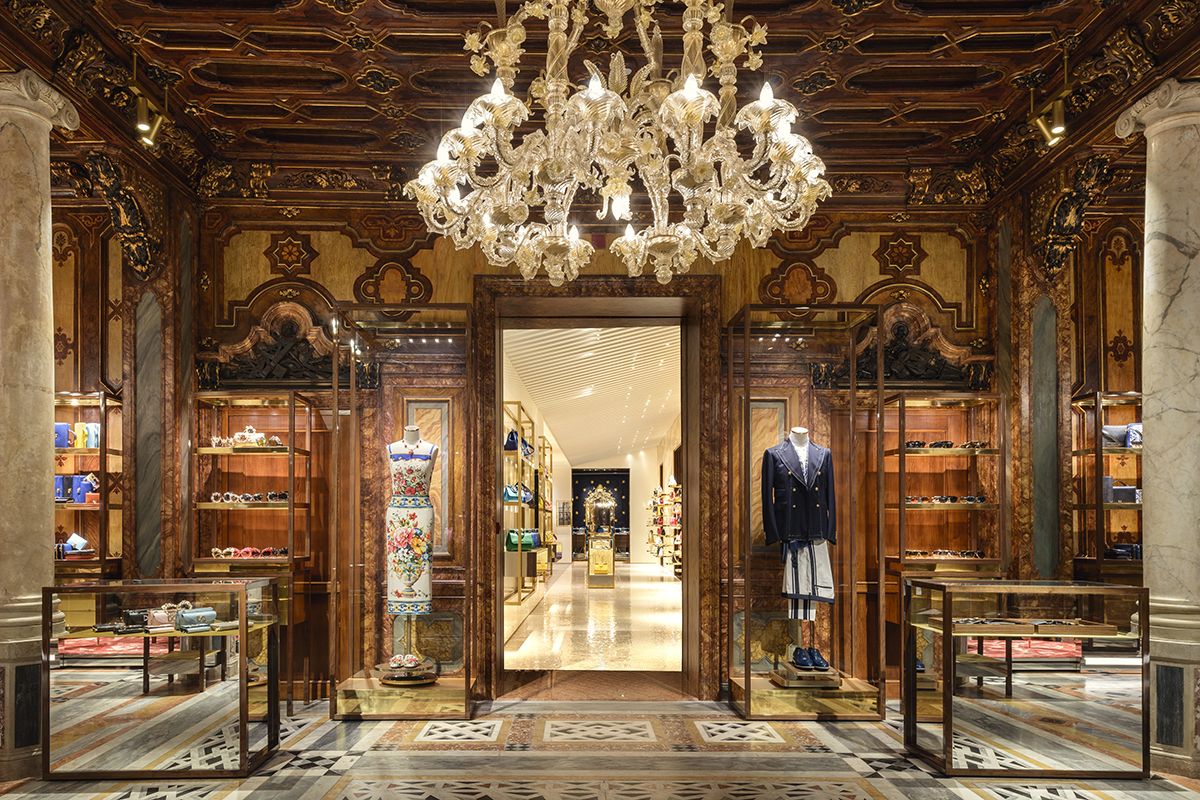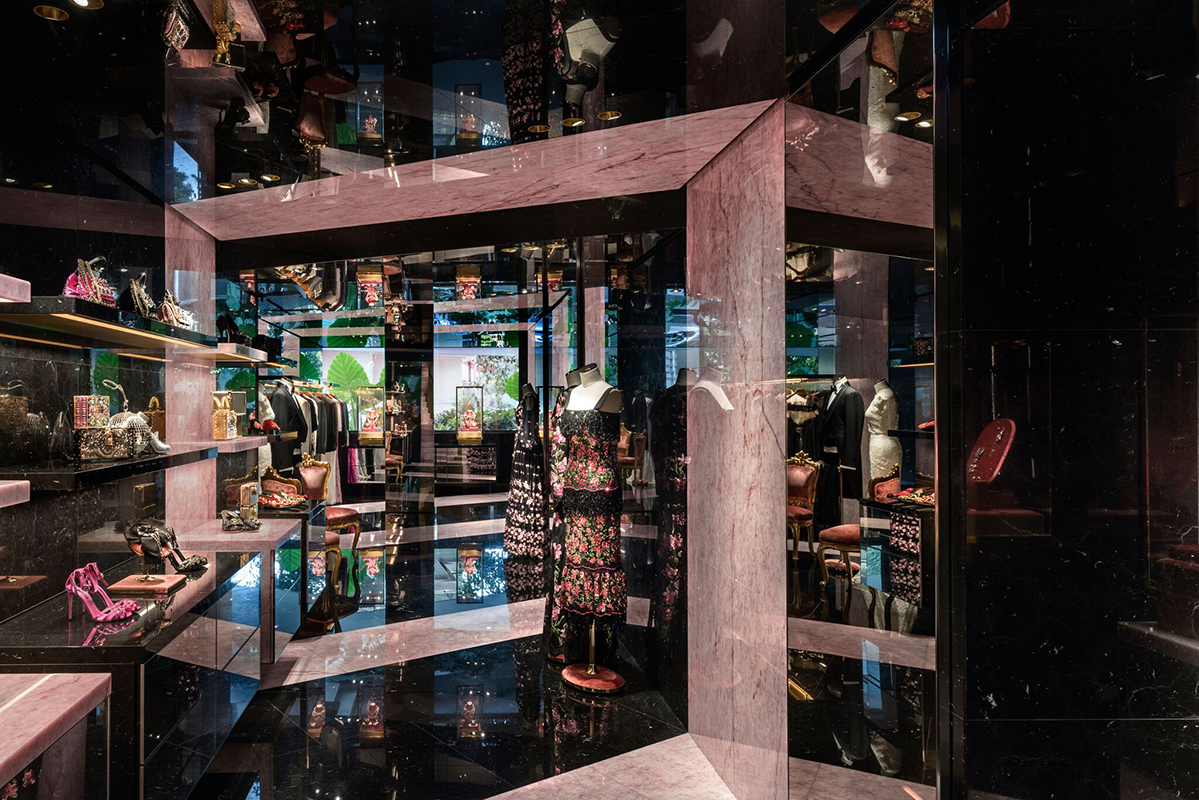This website uses cookies so that we can provide you with the best user experience possible. Cookie information is stored in your browser and performs functions such as recognising you when you return to our website and helping our team to understand which sections of the website you find most interesting and useful.
Luxury architect CARBONDALE on transforming Dolce & Gabbana stores into designer destinations
By Michelle Johnson | 1 December 2017 | Style
Eric Carlson tells Tempus about realising Dolce & Gabanna’s dream to combine architecture and fashion

As an expert in luxury architecture, Eric Carlson of CARBONDALE was delighted to be approached by Dolce & Gabbana about taking on a very unique approach to designer stores. The fashion designers wanted Carlson to not just customise the design of their stores, but to create a completely different concept that reflected the history of the location, combining their design aesthetic with the luxury destinations they were travelling to.
The contrast is obvious in their initial collaborations, from Venice's perfectly preserved Renaissance storefront to Monte-Carlo's James Bond themed VIP entrance. Tempus sat down with Carlson to find out more about the meaning behind the designs – and how the worlds of designer fashion and bespoke architecture combine…
How did your collaboration with the Dolce & Gabbana stores in Monaco and Venice come about?
I was invited to Milan to meet with Domenico Dolce to discuss architecture and luxury, and discovered that Dolce & Gabbana are strategically pursuing something that has never been done before – to create completely different designs for each of their stores. This the ultimate in luxury and perfectly aligns with our expertise in customising designs for each of our clients. This put into motion a series of collaborations beginning with projects in Venice, Monaco and Beijing.
What were the challenges or contrasts of designing each store?
These stores are distinguishable in every way. Venice is not a shopping destination like Paris or Milan – it's a cultural destination where visitors from all over the world come to discover the city's urbanism, historical architecture, the art biennale, etc – so my vision was to create a cultural destination for Dolce & Gabbana in Venice, a store that generates curiosity and introduces people to the brand. Venice was, and still is, a city of explorers. Following the historical spatial model of traditional Italian palazzo’s with their characteristically different spaces I composed to store into a series of 14 distinctive rooms. Each space is separated by highly polished red-gum wood door passages to create an elusive transition and inspire a sense of discovery for the visitors. >>
Related Link: Renzo Rosso on why money is no object when it comes to his fashion empire
The Venice store is in a wonderful historical building. How far did you work with the original features compared to creating contrast?
Dolce & Gabbana as a brand is not about balance, it's about contrast, so I decided to create a striking contrast between a decidedly contemporary design and the street–facing 1880 Neo-Venetian Renaissance style architecture, which was methodically restored to its original extravagance. Upon entering the warm, richly ornate historical accessories room, visitors are immediately confronted by a fascinating time-portal-like doorway that leading to the contemporary volumes beyond and seems to sharply mark the separation between the past and present. This sets the stage for what follows. The Jewellery room is inspired by the Basilica San Marco, wrapped in glass mosaics of blue and 24 karate gold stars handmade by Friul and Orsoni, Venice-based family artisans whose work dates back to the 1889. I love this space because it represents a rare, fearless contemporary beauty without relying on austerity or minimalism. It’s sumptuous. For me this could also perfectly describe Dolce & Gabbana.
And what about the Monte Carlo store?
The Monaco context and customers are completely different. The architectural experience is very exclusive, although large in area – the 750 square meters is conceived as an intimate VIP room for a very select clientele. It's situated near the famous Casino de Monte Carlo and the Café de Paris with views of the sea. I was inspired by the glamour, exclusivity, opulence – and a touch of James Bond inspired humour – to create a venue for a jet-set clientele. The long narrow lower level space with its discreet VIP entrance architecturally interprets the famous 007 swirling gun-barrel with dynamic spirals of polished black marble and pink quartz stone wrapping the floor, walls and ceiling.
Did you work with Dolce and Gabbana themselves? How involved were they in the design?
I have worked with numerous luxury brands during my career but this was the first time I have designed for designers. Most luxury brands today are led by business executives, but Dolce & Gabbana is one of the very rare brands led by the creators. During the design process our meetings were an incredible experience with a cornucopia of ideas and creative exchanges with the owners. Domenico Dolce was particularly involved in the orchestration of many materials, textures and colours in relationship to the ideas, and the products. >>
Related Link: Designer Tracey Boyd on how fashion follows furnishing at Sonder launch

How intertwined are fashion and interior design?
The nature of fashion is of course very different than architecture and interior design both in scale and in longevity, but they both share the ingredients of creativity and functionality. Fashion designers are constantly innovating and redefining their styles with each collection with an intense creative fervour – which is what we try to achieve at CARBONDALE, striving to make original works for each of our clients rather than simply following existing trends and styles.
When you're creating a design like this, ultimately it needs to remain a shopping experience. What are the key elements to creating the necessary ambience?
This is very different than typical architecture design, where you focus on one defining aspect of the design. Before we begin, we endeavour to understand all functional and operational aspects of the project, but it's also essential to understand the identity of the client, the place and visitors. This involves an extensive research phase, where we interview clients, customers and members from every department of the company. We also visited the two project sites and numerous specialty artisans located in Venice, as well traveling to key locations in Sicily (a primary inspiration for the brand).







